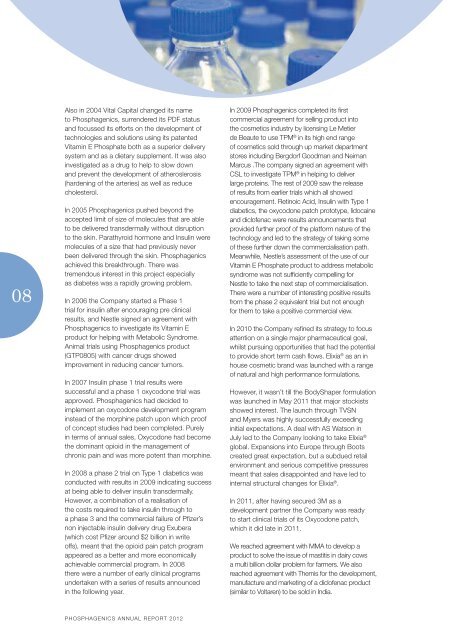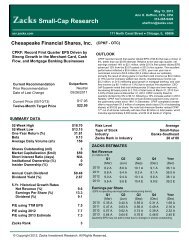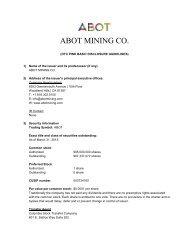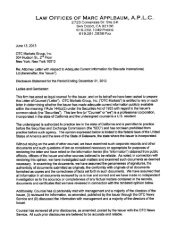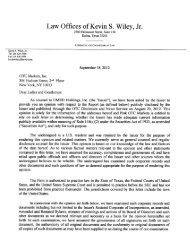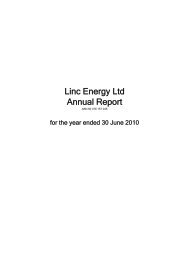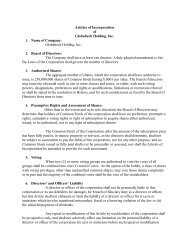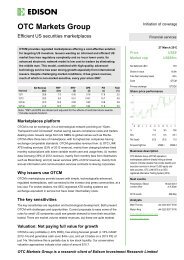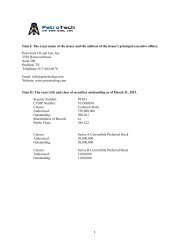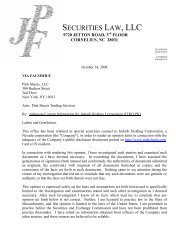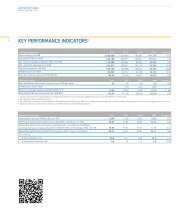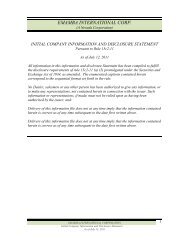2013 Apr 15 Annual Report 2012 - Phosphagenics
2013 Apr 15 Annual Report 2012 - Phosphagenics
2013 Apr 15 Annual Report 2012 - Phosphagenics
You also want an ePaper? Increase the reach of your titles
YUMPU automatically turns print PDFs into web optimized ePapers that Google loves.
08<br />
Also in 2004 Vital Capital changed its name<br />
to <strong>Phosphagenics</strong>, surrendered its PDF status<br />
and focussed its efforts on the development of<br />
technologies and solutions using its patented<br />
Vitamin E Phosphate both as a superior delivery<br />
system and as a dietary supplement. It was also<br />
investigated as a drug to help to slow down<br />
and prevent the development of atheroslerosis<br />
(hardening of the arteries) as well as reduce<br />
cholesterol.<br />
In 2005 <strong>Phosphagenics</strong> pushed beyond the<br />
accepted limit of size of molecules that are able<br />
to be delivered transdermally without disruption<br />
to the skin. Parathyroid hormone and Insulin were<br />
molecules of a size that had previously never<br />
been delivered through the skin. <strong>Phosphagenics</strong><br />
achieved this breakthrough. There was<br />
tremendous interest in this project especially<br />
as diabetes was a rapidly growing problem.<br />
In 2006 the Company started a Phase 1<br />
trial for insulin after encouraging pre clinical<br />
results, and Nestle signed an agreement with<br />
<strong>Phosphagenics</strong> to investigate its Vitamin E<br />
product for helping with Metabolic Syndrome.<br />
Animal trials using <strong>Phosphagenics</strong> product<br />
(GTP0805) with cancer drugs showed<br />
improvement in reducing cancer tumors.<br />
In 2007 Insulin phase 1 trial results were<br />
successful and a phase 1 oxycodone trial was<br />
approved. <strong>Phosphagenics</strong> had decided to<br />
implement an oxycodone development program<br />
instead of the morphine patch upon which proof<br />
of concept studies had been completed. Purely<br />
in terms of annual sales, Oxycodone had become<br />
the dominant opioid in the management of<br />
chronic pain and was more potent than morphine.<br />
In 2008 a phase 2 trial on Type 1 diabetics was<br />
conducted with results in 2009 indicating success<br />
at being able to deliver insulin transdermally.<br />
However, a combination of a realisation of<br />
the costs required to take insulin through to<br />
a phase 3 and the commercial failure of Pfizer’s<br />
non injectable insulin delivery drug Exubera<br />
(which cost Pfizer around $2 billion in write<br />
offs), meant that the opioid pain patch program<br />
appeared as a better and more economically<br />
achievable commercial program. In 2008<br />
there were a number of early clinical programs<br />
undertaken with a series of results announced<br />
in the following year.<br />
In 2009 <strong>Phosphagenics</strong> completed its first<br />
commercial agreement for selling product into<br />
the cosmetics industry by licensing Le Metier<br />
de Beaute to use TPM ® in its high end range<br />
of cosmetics sold through up market department<br />
stores including Bergdorf Goodman and Neiman<br />
Marcus .The company signed an agreement with<br />
CSL to investigate TPM ® in helping to deliver<br />
large proteins. The rest of 2009 saw the release<br />
of results from earlier trials which all showed<br />
encouragement. Retinoic Acid, Insulin with Type 1<br />
diabetics, the oxycodone patch prototype, lidocaine<br />
and diclofenac were results announcements that<br />
provided further proof of the platform nature of the<br />
technology and led to the strategy of taking some<br />
of these further down the commercialisation path.<br />
Meanwhile, Nestle’s assessment of the use of our<br />
Vitamin E Phosphate product to address metabolic<br />
syndrome was not sufficiently compelling for<br />
Nestle to take the next step of commercialisation.<br />
There were a number of interesting positive results<br />
from the phase 2 equivalent trial but not enough<br />
for them to take a positive commercial view.<br />
In 2010 the Company refined its strategy to focus<br />
attention on a single major pharmaceutical goal,<br />
whilst pursuing opportunities that had the potential<br />
to provide short term cash flows. Elixia ® as an in<br />
house cosmetic brand was launched with a range<br />
of natural and high performance formulations.<br />
However, it wasn’t till the BodyShaper formulation<br />
was launched in May 2011 that major stockists<br />
showed interest. The launch through TVSN<br />
and Myers was highly successfully exceeding<br />
initial expectations. A deal with AS Watson in<br />
July led to the Company looking to take Elixia ®<br />
global. Expansions into Europe through Boots<br />
created great expectation, but a subdued retail<br />
environment and serious competitive pressures<br />
meant that sales disappointed and have led to<br />
internal structural changes for Elixia ® .<br />
In 2011, after having secured 3M as a<br />
development partner the Company was ready<br />
to start clinical trials of its Oxycodone patch,<br />
which it did late in 2011.<br />
We reached agreement with MMA to develop a<br />
product to solve the issue of mastitis in dairy cows<br />
a multi billion dollar problem for farmers. We also<br />
reached agreement with Themis for the development,<br />
manufacture and marketing of a diclofenac product<br />
(similar to Voltaren) to be sold in India.<br />
PHOSPHAGENICS ANNUAL REPORT <strong>2012</strong>


